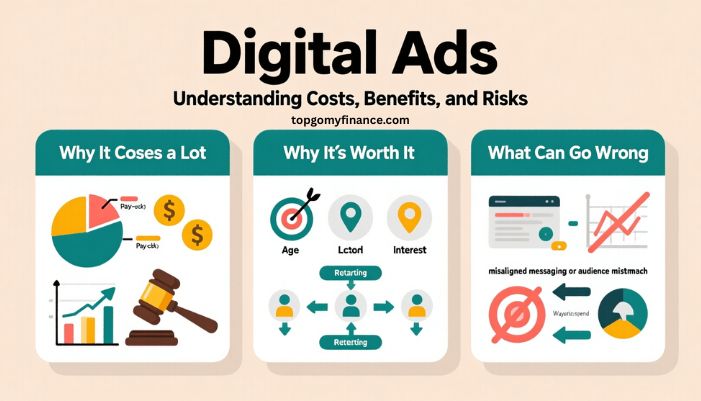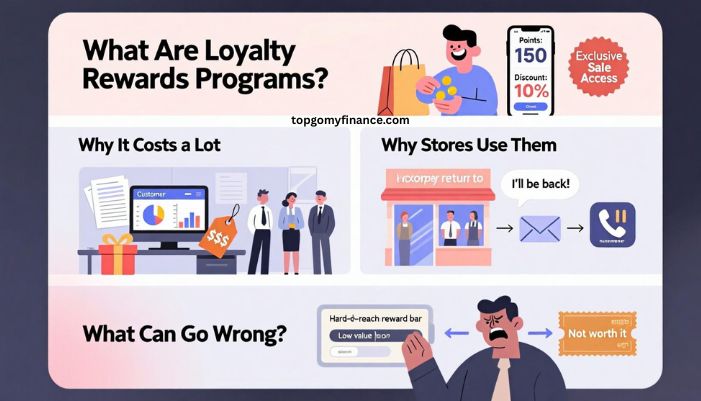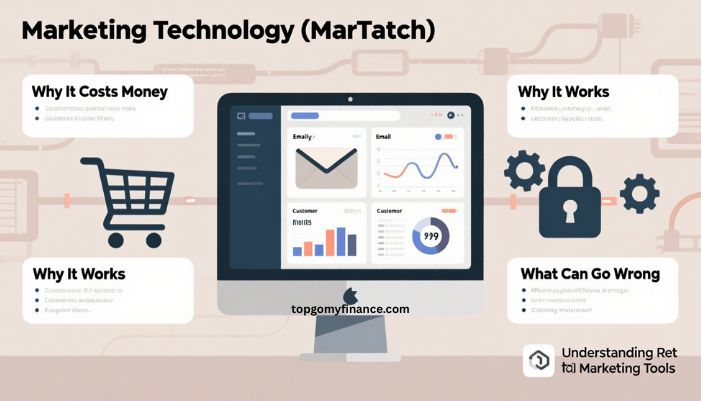Retailers work hard to get more people into their stores or on their websites. To do that, they need strong marketing. But not all marketing is cheap or simple.
Most retailers spend nearly half of their entire marketing budget on five main areas. These are the tools and methods that bring in the most sales. They help stores get new customers and keep old ones coming back.
If you own or run a store, knowing how this money is used helps you make better choices. This guide breaks it down in plain language.
Digital Ads

Digital ads are one of the biggest expenses in retail marketing. These ads show up online. You see them on websites, in search results, and on social media like Facebook, Instagram, and YouTube.
Why it costs a lot
Retailers often pay each time someone clicks on their ad. This is called pay-per-click. If many people are bidding on the same keyword or audience, the price goes up. Some clicks cost just a few cents. Others cost several dollars. These costs add up fast.
Why it’s worth it
Digital ads reach people who are already interested in shopping. Stores can choose who sees the ads based on age, location, interests, or past actions. For example, a shoe store can show ads only to people who have visited their website or searched for sneakers.
What can go wrong
You can spend a lot of money and get little back if your ads are not well planned. If the message is unclear or the wrong people see your ad, it won’t work. That means wasted money.
In-Store Promotions and Displays

Even with online shopping, many people still go to stores. What people see when they walk in can change what they buy. That’s why stores spend big on displays, signs, and events.
Why this is expensive
Stores update displays often, sometimes every week. They pay for new signs, product stands, and decorations. Some stores hire special workers to design how the store looks.
Why it matters
A clean, fun, and helpful store layout makes people stay longer. It also helps them find what they want. If they see a “Buy One Get One Free” sign or a bright new product display, they may spend more money.
What can go wrong
Old or messy displays make the store feel boring or confusing. If shoppers can’t tell what’s on sale or what’s new, they might walk out without buying anything.
Loyalty and Rewards Programs

Loyalty programs give people rewards when they shop. These might include points, discounts, free items, or early access to sales.
Why it costs a lot
Running a loyalty program takes planning, software, and staff. Stores also give away real value like money off, gifts, or special perks. Some pay for apps or tools that track what each customer buys.
Why stores use them
Happy customers come back. People in a rewards program are more likely to return, shop more often, and tell their friends. Also, when customers sign up, they give their email or phone number. Stores use this to send updates and offers.
What can go wrong
If rewards are too small or too hard to earn, people won’t care. If sign-up takes too long, shoppers may walk away. The best programs are simple and offer value right away.
Content and Social Media

Content marketing means sharing useful or fun information. It can be blog posts, videos, guides, or how-to tips. Many retailers also use social media to talk with customers and show off products.
Why it’s expensive
Making content takes time and money. You need writers, video makers, and graphic designers. You also need tools to post and plan your content. Sometimes stores pay influencers to talk about their products.
Why it helps
Good content builds trust. When shoppers read a guide or watch a video, they understand the product better. Content also helps your website show up in search results. A blog post or video can bring in new customers for months or years.
What can go wrong
Some content gets ignored. If it’s boring or off-topic, people scroll past it. Posting just to stay active doesn’t help. Every post should give real value or help customers solve a problem.
Marketing Technology and Data Tools

Retailers use software to track customer actions, send emails, and personalize messages. This is called MarTech, short for marketing technology.
Why it costs money
Good tools cost a lot. Some charge monthly fees. Others charge based on how many customers you have. Many stores also pay to connect different tools or train their team to use them.
Why it works
These tools help stores send better messages. For example, if someone buys shoes, the system might send them an email showing socks or cleaning products. Data tools also help track what’s working and what’s not.
What can go wrong
Too many tools can confuse the team. Some stores pay for features they don’t use. If the tools aren’t set up right, they give bad data. That leads to bad decisions.
Why Do These Five Areas Take Up So Much Budget?
These five strategies all focus on getting and keeping customers. Each one works best when it connects with the others.
- Digital ads bring in new people
- In-store promotions make people buy more
- Loyalty programs bring people back
- Content helps shoppers trust your store
- Data tools help you plan smarter
Together, they form the core of a strong retail marketing plan. That’s why they take up such a big part of the budget.
How Can You Use Your Budget Wisely?

Even if you don’t have a big budget, you can still use these tips.
1. Track results
Know what’s working. Look at numbers like clicks, visits, and sales. Stop what doesn’t help.
2. Test small
Try a small ad or a simple post before spending a lot. Watch what people like.
3. Keep it simple
Don’t try to do everything. Choose a few tools or platforms and do them well.
4. Focus on your customer
Make things easier for shoppers. Give them helpful info, good deals, and reasons to come back.
5. Use your team well
Even great tools need skilled people. Make sure your staff knows how to use the tools and data.
Final Thoughts
Retailers spend almost half their marketing money on five things. These are digital ads, store displays, loyalty programs, content, and marketing tools. They work together to bring people in, help them buy, and keep them coming back.
If you run a store, start with what you can afford. Pick one or two areas. Do them well. Then grow over time. Watch what your customers like. Change your plan when needed. That’s how you get the best results from your budget.
FAQs
What do retailers spend the most marketing money on?
Most spend the most on digital ads. These reach many people and are easy to track.
Why are loyalty programs so popular?
They keep shoppers coming back. People like rewards, and stores like repeat customers.
Do in-store promotions still matter?
Yes. Signs, displays, and offers still help sell more in physical stores.
Is content worth the cost?
Yes, if it’s helpful. Good content builds trust and brings in new shoppers over time.
Why use marketing tech tools?
These tools help you send better messages, learn about your customers, and make better choices.











